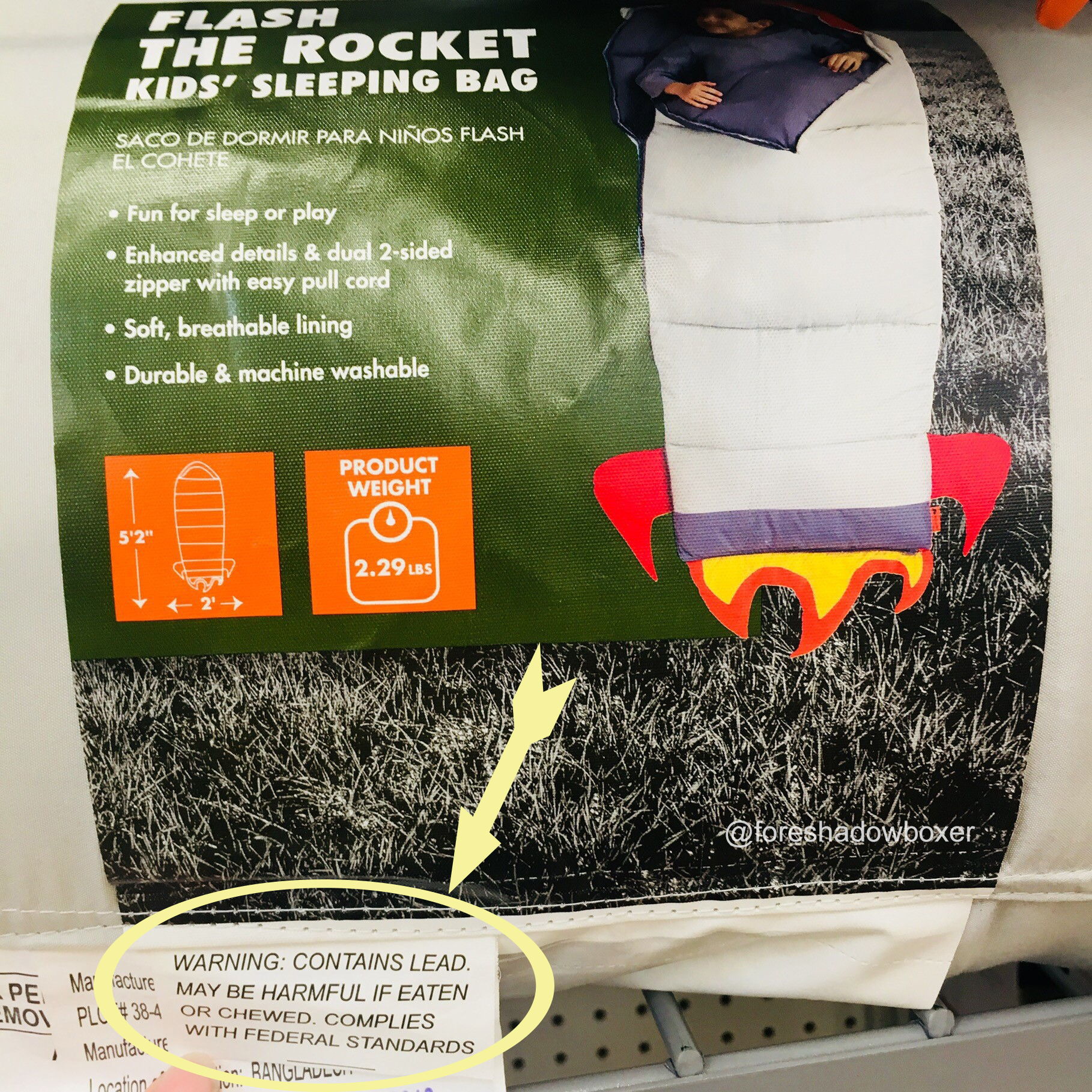Nothing says “sweet dreams” quite like a lead-laced sleeping bag.
One of the most upsetting things for me, as a first-time parent, was realizing my daughter’s first-ever sippy/straw cup contained lead paint. I’d spent HOURS looking for the perfect cup — one that stored her drink in glass (because of all the gross chemicals that leach into water from plastic); had a silicone straw (for the same reason); and yet was encased to prevent breaking if thrown or dropped. So when I discovered a cup from a “green” company that ticked all of those boxes, I felt like I’d hiked to the top of a parenting Everest.
That bubble burst in a (not-so) glorious fashion a few months later when a friend sent me an article that confirmed the unthinkable: the demarcations on the glass portion of said sippy cup were done with lead paint. And the silicone straw? It contained cadmium.
I was livid. Frustrated. Upset. How was this even possible? Isn’t lead paint — particularly for items INFANTS will come into contact with — banned? Would there be a recall? Was the company — which sold and continues to sell many of its products at Whole Foods — going to issue a massive apology, be completely ashamed, and explain away the matter as a manufacturing error?
The answers astounded me: there would be no recall. Having lead paint on a surface infants and toddlers drink from is somehow still legal (there are certain restrictions, but they’re a joke, particularly when you consider the amount of lead that is safe for babies and toddlers is ZERO).
Worse yet, even though the company (Green Sprouts) offered to replace the glasses with “paint free” ones for free, there was no real apology (and certainly not a recall). Rather, they explained it away as “within legal limits.” And I say again: NO AMOUNT OF LEAD IS “SAFE” FOR ANYONE, LEAST OF ALL SMALL CHILDREN. Even small amounts of lead exposure, particularly for infants and toddlers, can cause intellectual disabilities, brain damage, kidney failure and possibly death.
Lead paint should have gone the way of dinosaurs, blast into extinction by the meteor of public awareness. But instead: it persists — presumably because it’s dirt cheap — and even companies with “green” in their name and mission continue to use it with reckless abandon.
Skip ahead two years. I’m at Walmart looking for a camping chair for my daughter when I stumble upon this adorable rocket ship sleeping bag from Ozark Trail (Walmart’s own line of outdoor gear). It feels soft, like cotton, and since my daughter is currently obsessed with all things pertaining to space, it seemed like the perfect purchase. I was trying to figure out what the lining was made out of when I instead found a tag indicating the sleeping bag (for some inexplicable reason) contains lead and “can be harmful if chewed.”
All of the anger I felt two years ago came flooding back. Like many three-year olds, my daughter still puts WAAAYYY too many things in her mouth, and the odds of her eventually suckling on her sleeping bag are pretty high. So while on one hand I’m grateful they at least had the wherewithal/legal foresight to mark the bag with this disclaimer — our sippy cup manufacturer gave no such notice — I’m still beyond upset that lead is still widely used in consumer goods, particularly those made for children.
This. Is. Not. O. K.
So how do we make it stop? We could storm the legal bodies that set the limits (namely the CPSC, in the case of consumer goods), but no one really seems to listen to anyone unless money is exchanging hands. And let’s be honest: whether out of necessity or simply the desire to save, the vast majority of consumers are more likely to roll the dice on a cheaper product, rather than invest in a more expensive item that has been rigorously tested and certified to not contain harmful materials. Such products do exist in some consumer categories, but they are cost-prohibitive for many families (infuriating when you consider lead shouldn’t be allowed in any products regardless of price tag, and no companies should allow it under the flag of “well, it meets [lackluster] government regulations”) .
So what is a consumer to do?
For starters, look closely at product labels. If it has a “contains lead” warning, don’t buy it. If it includes a warning about how it doesn’t meet safety requirements for the state of California — the state with the strictest regulations — don’t buy it. Companies make merchandising decisions based on sales. If we keep buying it, they’ll keep making it. If we don’t buy it, they’ll eventually stop. It’s economics 101.
And if you buy something with no such warning label that is later determined to contain anything unsafe: raise a stink. Call them. Write them. Demand they do better, and stop buying them until they do.
Because contrary to many idioms, “love” isn’t the universal language — money is. And until we start speaking with our wallets, products containing lead and other harmful materials will continue to find their onto store shelves.






